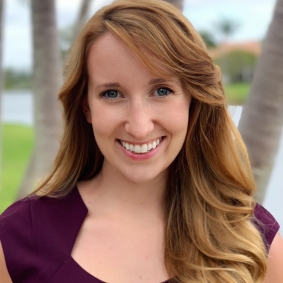Knauss legislative fellowships in Congress help build careers — and they're fun and educational. See our video and fact sheet for details.
Melanie Jackson

Fellowship Institution:
NOAA Office of Legislative and Intergovernmental AffairsStart Year:
2019Melanie Jackson is serving as an executive fellow in NOAA's Office of Legislative and Intergovernmental Affairs. She will be the official liaison between NOAA and Congress and will be responsible for communicating the Administration's views to Congress.
Jackson received her undergraduate degree in marine science and biology from the University of Miami's Rosenstiel School of Marine and Atmospheric Science in 2012. Following graduation, she served a term in AmeriCorps as the watershed ambassador for the Hackensack River, New Jersey. In 2013, Jackson left her home state of New Jersey for the University of Maryland Center for Environmental Science (UMCES) Horn Point Laboratory in Cambridge, Maryland. There she studies algae blooms and nitrogen pollution for her master's degree. Jackson is currently completing her doctorate, specializing in oyster restoration and aquaculture and how oysters remove nitrogen pollution. When she's not in the field or lab, you can find her hiking or singing science parody songs for UMCES' Integration & Application Network.
Program Announcements
-
-
Maryland Sea Grant has program development funds for start-up efforts, graduate student research, or strategic support for emerging areas of research. Apply here.
News and Blogs
Video Gallery
Sea Grant Film Explores a Diminishing Smithville
Smithville is a community on Maryland’s Eastern Shore, on the edge of the Blackwater National Wildlife Refuge. A century ago, Smithville had more than 100 residents. Today, it has four, in two homes: an elderly couple, and one elderly woman and her son, who cares for her.
Featured Fellow
Featured Research Project
Developing a habitat model for mysids, an important link in Chesapeake Bay food webs
Mysids are important mesozooplankton prey for many species of fish in Chesapeake Bay and are an important link in transferring energy from lower to upper trophic levels. Mysids also serve as biological vectors for benthic-pelagic coupling due to their diel vertical migration and omnivorous prey-switching behavior, which makes mysids important regulators of food web architecture. Despite their central role in coastal food webs, surprisingly little is known about mysid ecology and dynamics in Chesapeake Bay.
The Blue Crab: Callinectes Sapidus
An essential resource for researchers, students, and managers. Get your copy today!
Chesapeake Quarterly Magazine
Restoration Takes Root: Living Shorelines for Changing Coasts


©2025 Maryland Sea Grant. All rights reserved.
5825 University Research Court, Suite 1350 | College Park, MD 20740
Phone: (301) 405-7500 | Fax: (301) 314-5780 | Contact Us



